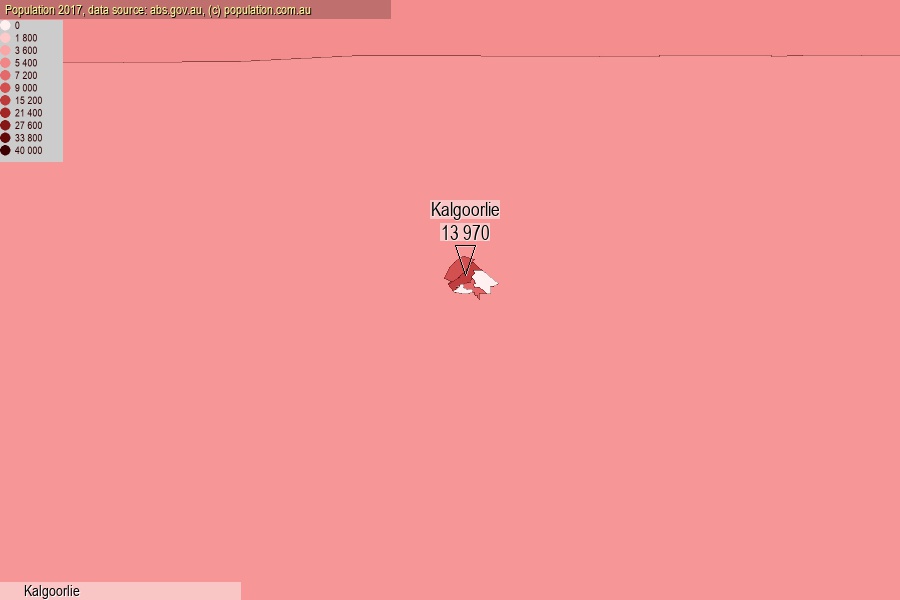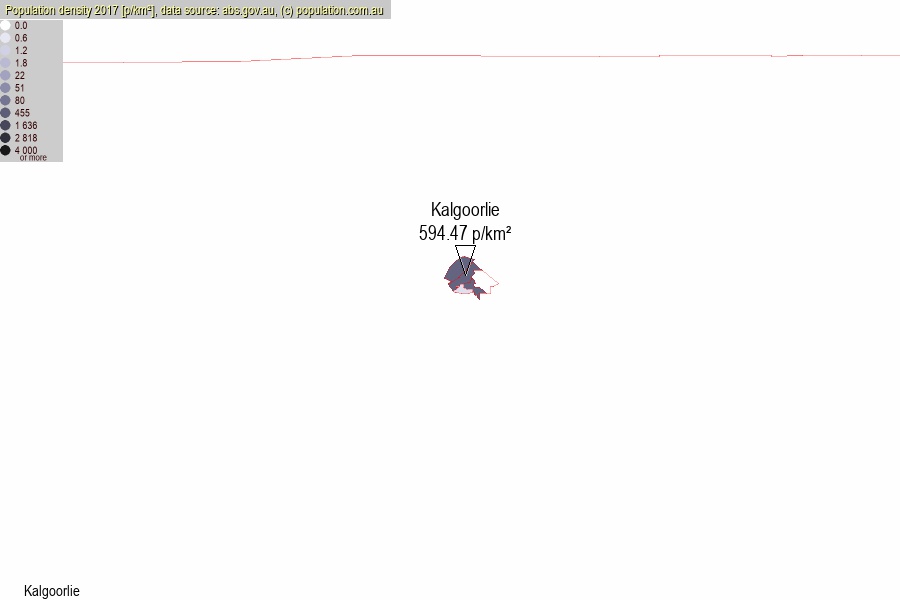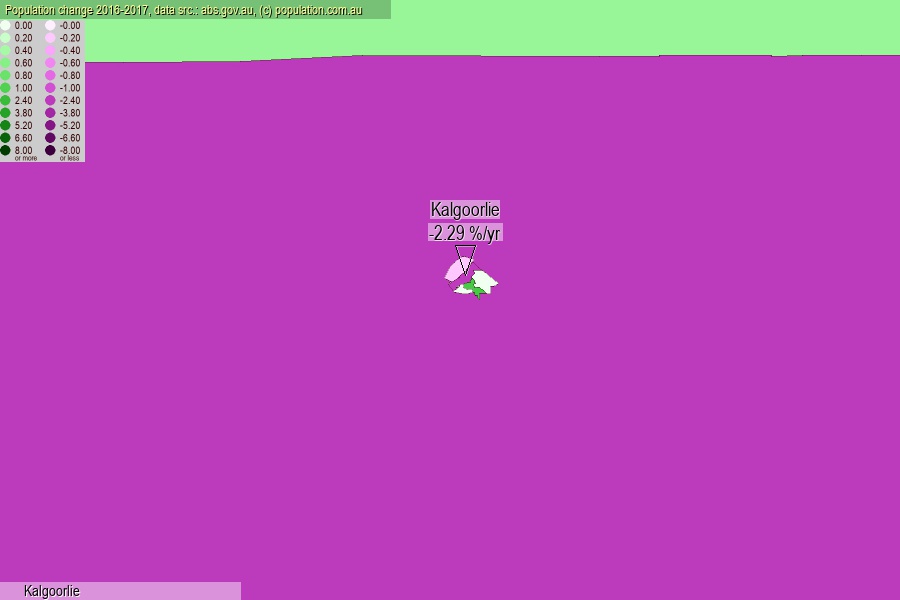 population.com.au
population.com.auLast official estimated population of Kalgoorlie (as Statistical Area Level 2) was 13 970 people (on 2017-06-30)[2]. This was 0.06% of total Australian population and 0.539% of WA population. Area of Kalgoorlie is 23.50 km², in this year population density was 594.47 p/km² . If population growth rate would be same as in period 2016-2017 (-2.29%/yr), Kalgoorlie population in 2025 would be 11 603. [0]



Click to enlarge. Kalgoorlie is located in the center of the images.
Population [people], population density [p./km²] and population change [%/year] [2]
View borders » (new window) [4]
[2001-2002] -0.17 %/Yr.
[2002-2003] +2.40 %/Yr.
[2003-2004] -0.28 %/Yr.
[2004-2005] +0.09 %/Yr.
[2005-2006] +1.62 %/Yr.
[2006-2007] +1.31 %/Yr.
[2007-2008] +3.13 %/Yr.
[2008-2009] +2.08 %/Yr.
[2009-2010] +0.83 %/Yr.
[2010-2011] +2.03 %/Yr.
[2011-2012] +2.53 %/Yr.
[2012-2013] +2.21 %/Yr.
[2013-2014] -2.36 %/Yr.
[2014-2015] -1.80 %/Yr.
[2015-2016] -1.57 %/Yr.
[2016-2017] -2.29 %/Yr.
[0] Calculated with linear interpolation from officially estimated population
[1] Read more about SA2 and Australian Statistical Geography Standard (ASGS) on abs.gov.au
[2] Population data from Australian Bureau of Statistics (Population and density: 2017; change: 2016-2017)
[3] Digital Boundaries: Australian Statistical Geography Standard (ASGS) 2016.
[4] Border coordinates are simplifyed using Ramer-Douglas-Peucker algorithm.